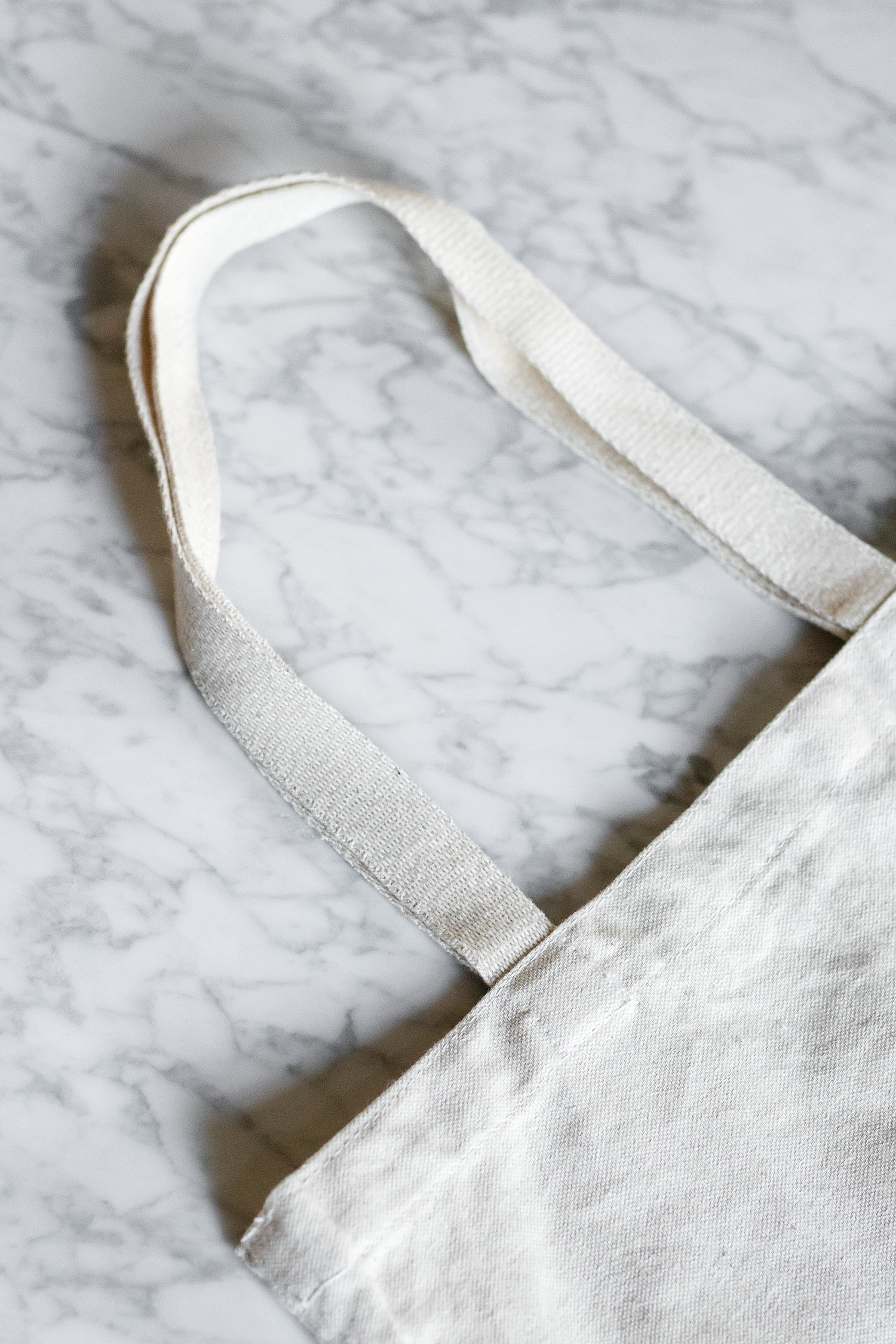HOW TO BREAK UP WITH SINGLE-USE PLASTIC
As a society, we've developed a rather toxic relationship with single-use plastic — both literally and figuratively speaking. Despite the fact that more than 30% of plastic packaging ends up in our oceans, we go through roughly 335 million metric tons of plastic each year, half of which is made for single-use products ... simply because it's convenient.
By no means am I a zero waster (yet), but over the last year or so, I've made some small lifestyle changes that have allowed me to reduce how much single-use plastic I use. It's certainly not something that will happen overnight, over the course of a week, month, or even a year, for that matter. What’s important is that you go at your own pace and focus on making changes that work with your lifestyle.
To celebrate #PlasticFreeJuly, I'm sharing some simple things we can all do to break up with single-use plastic for good.
SHOP WITH REUSABLE BAGS
Whether you're grocery shopping, thrifting, or buying things you probably don't need at Target, reusable bags are one of the easiest ways to avoid single-use plastic. Only 1% of plastic bags are returned for recycling, meaning the other 100 billion end up contaminating our landfills and oceans. I have a collection of about five canvas totes that I bring with me on my weekly grocery run, as well as a few smaller bags for storing produce and bulk goods. I also have a handful of non-food canvas bags that I try to remember when running other errands (this tends to be harder). I’d advise against using the same bags for food and non-food items as this can lead to cross contamination (plus, who wants food juice getting on their clothes, anyway). You should also wash your grocery bags at least once a month to prevent the spread of bacteria and foodborne illnesses.
PURCHASE FOOD PACKAGE-FREE WHEN POSSIBLE
One of the most effective ways to reduce single-use plastic waste is to purchase your food (and other products) package-free as much as possible — it’s crazy how much packing you’ll notice in the kitchen once you start keeping track. This lifestyle change will vary depending on your dietary needs as well as where you live, so just try your best and find what works for you. Buying package-free also helps you eat healthier overall because you're essentially forced to avoid the processed food aisles. The average grocery store offers a variety of produce items in bulk, which is by far the easiest food item to buy without packaging. Instead of using the flimsy plastic bags they provide, either let your fruits and veggies roam free (you should wash them well before eating anyway) or invest in cloth produce bags, especially for loose food items like brussels sprouts and baby spinach.
I'm fortunate that our local grocery store also offers a fairly large selection of dry goods like quinoa, melting chocolate, and oats in bulk. I'll usually bring either a small jar or a cloth bag to stock up on these items. Depending on your grocery store or local farmer's market, you may also be able to remove the tare weight of the container (thought I've been fine just using the overall weight).
OPT FOR REUSABLE STRAWS ... OR NO STRAWS AT ALL
In the U.S. alone, over 500 million plastic straws are used every day, posing a hazard to seabirds, turtles and other marine life. When eating out, make it a habit to tell your waiter, "No straw, please" — but don't beat yourself up if you forget every now and then, or if the waiter doesn't even give you an opportunity to refuse (my biggest pet peeve). And if you would prefer to use a straw for sanitary reasons, invest in a pack of stainless steel ones or glass ones that you can stash in your bag and have ready to go!
BYO-EVERYTHING
Unless you eat at home 100% of the time, it's helpful to have a zero waste toolkit that you can take on-the-go to avoid single-use plastic. This can include everything from reusable cups and bottles, utensils, stainless steel straws, and even a cloth napkin. I'll usually base my toolkit on where I'm going to avoid lugging around more than I need.
This is especially handy in the summer, when iced coffee becomes the go-to drink. Each time you purchase an iced coffee to-go, you end up with a plastic cup ... a plastic lid ... and the dreaded plastic straw. But there's an incredibly easy alternative — and that's bringing your own cup! Speaking of which, I think it’s time for me to invest in a larger cup for iced coffees on-the-go. My KeepCup is great, but it's just a tad too small once ice is added, making ordering coffee more awkward than it needs to be.
WHAT STEPS HAVE YOU TAKEN TO REDUCE SINGLE-USE PLASTIC WASTE?
This post contains affiliate links. When you shop using the links above, I may make a small portion of the sale. Thanks for supporting brands that support MOTIFIED!






